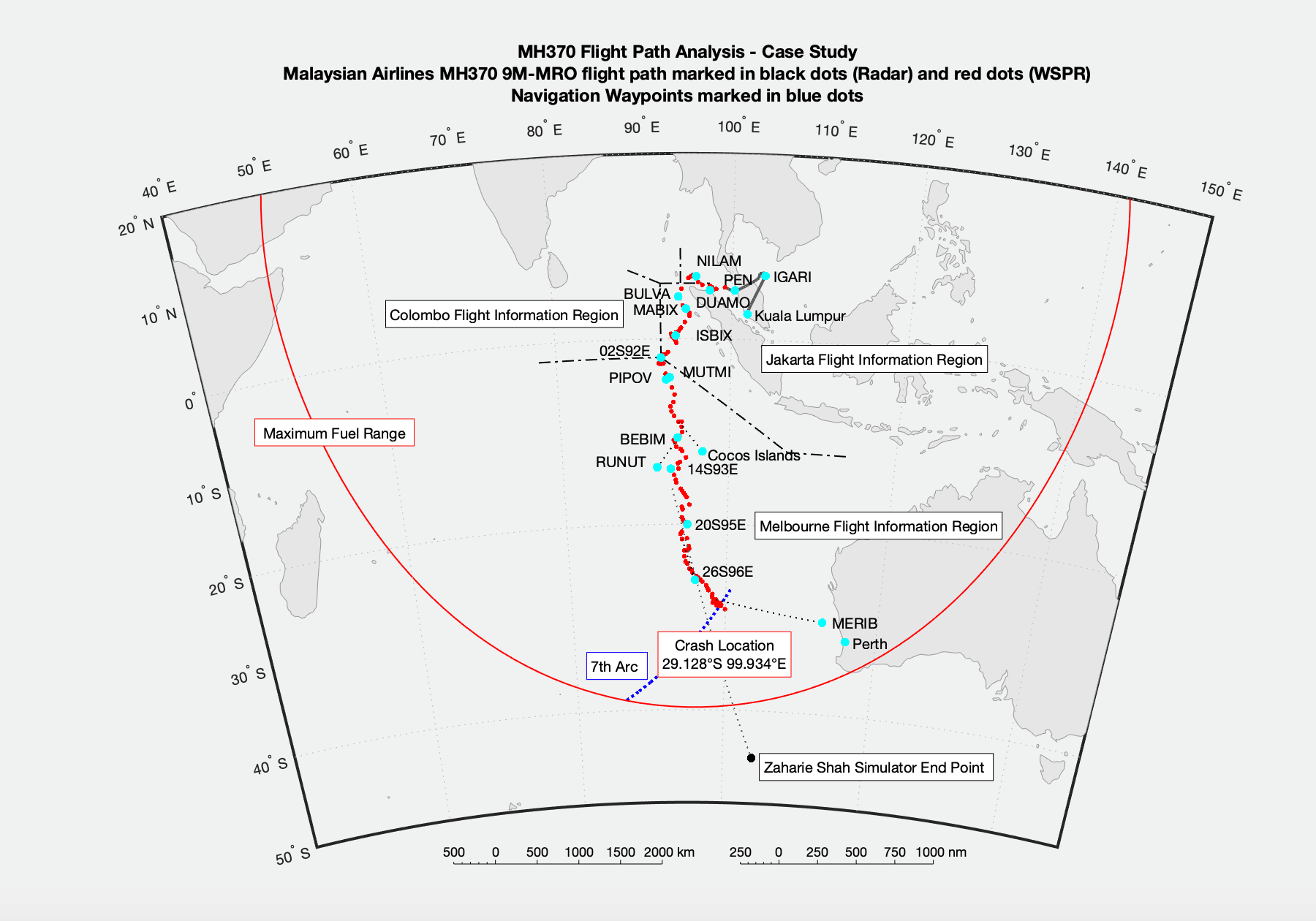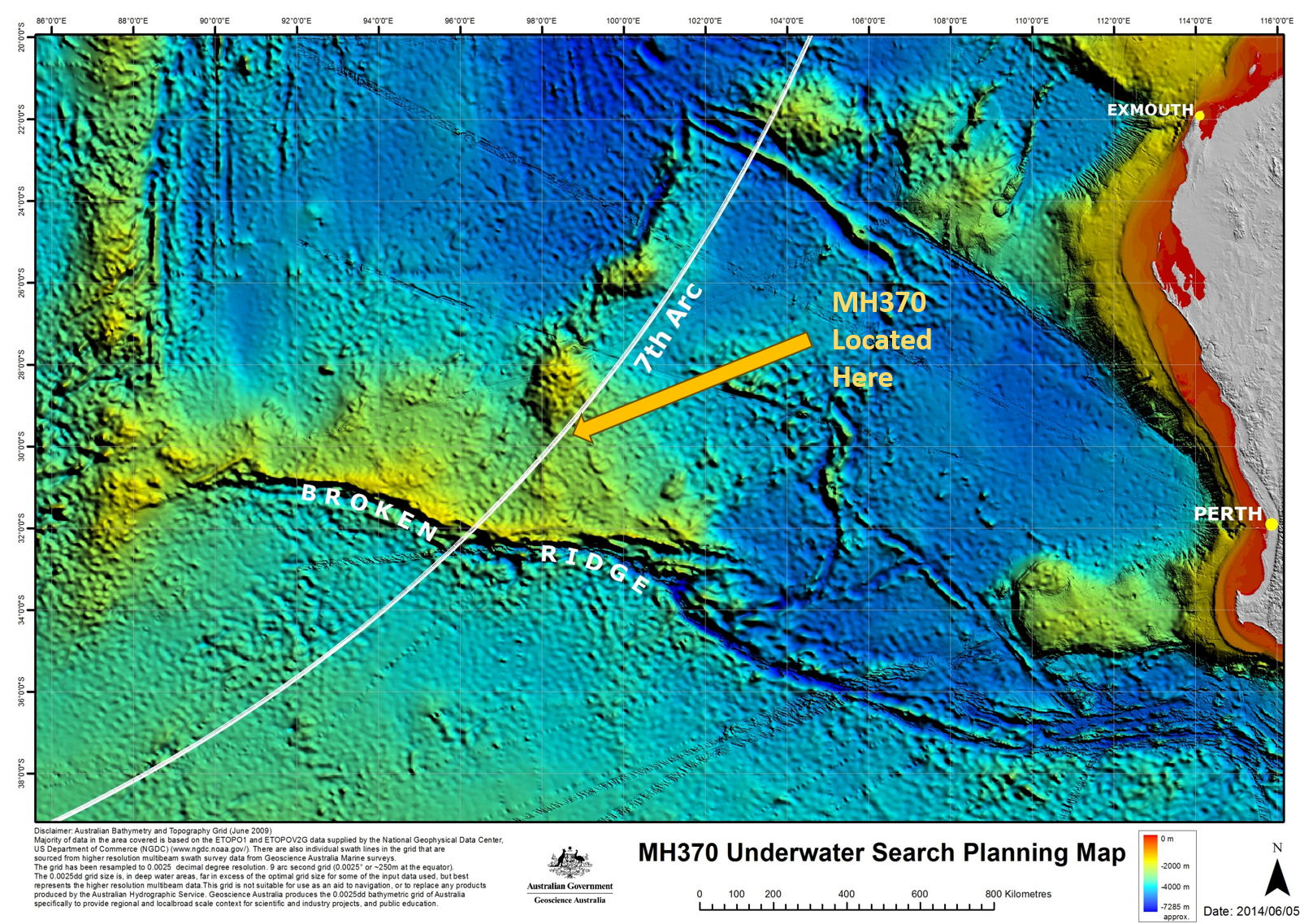MH370 Breakthrough Tracking Technology Dates To The 1950s
22 November, 2023
3 min read

Geoffrey Thomas
By joining our newsletter, you agree to our Privacy Policy


A fascinating new report highlights the extensive use of the technology -WSPR- that has found a new location of MH370 dating way back to 1956.
The report that can be read here is authored by Richard Godfrey, Dr. Hannes Coetzee (ZS6BZP) and Prof. Simon Maskell.
WSPR (Weak Signal Propagation Reporter) uses High Frequency (HF) ionospheric propagation to send signals around the world. Typical frequencies are in the range 3 MHz to 28 MHz. Transmission power levels are up to 5 W continuous and the duration of the transmission is 110.6 seconds.
The US military (Air Force and Navy) has invested heavily in research into HF ionospheric propagation since 1956, when a definitive set of experiments showed that the ionosphere is generally sufficiently stable for a HF ionospheric radar to succeed in over-the-horizon aircraft detection.
As a result, the US military has developed several Over-The-Horizon-Radar (OTHR) systems over the years, that have been in operation since 1961. These OTHR systems have been deployed in Chesapeake Bay, California, Virginia, Maine, Aleutian Islands, England and Australia.
The US military tested Round-The-World propagation successfully in 1978 and tested Precision Targeting of Aircraft successfully in 1985. Typical frequencies are in the range 3 MHz to 30 MHz. Transmission power levels are up to 25 kW with a pulse width of 100 µs.
WSPR can be used as an OTHR and has two key advantages, firstly in the large number and geographic spread of the transmitters and receivers and secondly in the long integration time of 110.6 seconds in the receivers.
Mr Godfrey said that "the Over-The-Horizon-Radar (OTHR) capability has been continuously improved since 1956. OTHR uses multi-hop (or multi-skip) ionospheric propagation in the HF frequency range of 3 MHz to 30 MHz, just like WSPR. OTHR is capable of accurately detecting aircraft over large distances
and propagations of up to round the world (RTW) have been observed.
"A number of experiments have been conducted by the US Air Force, Air Development Center in Rome, Georgia to test the RTW propagation distances and the accuracy of detecting and targeting aircraft. The ionosphere has been shown to be generally sufficiently stable for HF ionospheric propagation and detection of aircraft over large distances. WSPR can be used as an OTHR and has two key advantages,
firstly in the large number and geographic spread of the transmitters and receivers and secondly
in the long integration time of 110.6 seconds in the receivers."
Mr Godfrey, an aerospace engineer, has been working on WSPR to track MH370 for over three years and in September published a 232-page report with academics Dr Hannes Coetzee and Prof. Simon Maskell detailing where the plane likely ended its final journey on March 8.

Airline Ratings can exclusively reveal that the method has tracked the aircraft to a new location is 1,560km or 842nmi west of Perth (277 degrees) – slightly north of that previously thought. The aircraft is believed to be resting at a depth of up to 4,000m.

Over 120 books written about the MH370 disappearance
JOIN: AirlineRatings.com YouTube Channel
GET: Accurate MH370 Information From AirlineRatings.com Newsletter
Next Article
Qantas triples profit but misses mark

Get the latest news and updates straight to your inbox
No spam, no hassle, no fuss, just airline news direct to you.
By joining our newsletter, you agree to our Privacy Policy
Find us on social media
Comments
No comments yet, be the first to write one.
